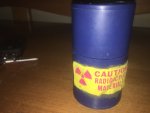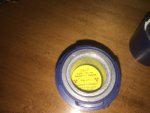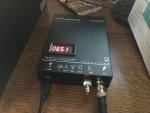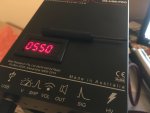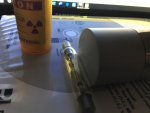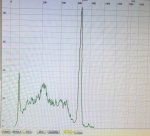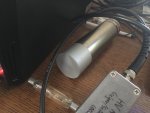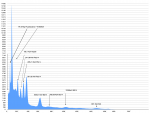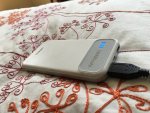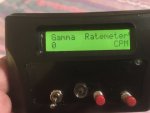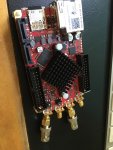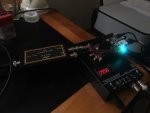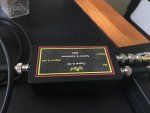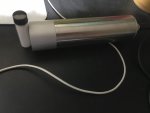- Joined
- Jul 4, 2008
- Messages
- 2,499
- Points
- 113
I have been on this topic for a while now so please bear with me. I do amature gamma spectroscopy among many other things as a hobby... I am one of these people who seldom finds anything boring/tiresome. Late last year, (Spring of 2019) I finally acquired a very well built Scionix 1.5" dia NaI/Tl detector along with a GS-USB-PRO from Gamma spectacular in Australia. For those of you who are not familiar with this product it has a built in ADC which samples incoming pulses as audio.
The binning of the pulses in done in PRA, Theremino MCA or Berqeulmoni (Japanese MCA software).
Along with equipment I got 2 very strong calibrated sources ( a 10uCi Mn54 disk source as well as a 5uCi Cs137 source). The Cs137 source does nearly 200KCPM on my LND7317 geiger tube. It is highly active! The 2 sources combine to nearly 365KCPM ~110uSv/hr Hence to say, they are both stored in a Lead isotope storage container. They are both considered mid-energy gamma emitters and require much paperwork to obtain in Canada.
Anyways... Here are some pictures of my setup. I am in the process of building a spectroscopy lead pig to shield the background. 0.25" Inner copper layer, followed by Cadmium foil, the followed by ~2-3" of Pb. The shield is meant to block the ambient background as much as possible to have only the measured sample show in the collected output spectrum.
All my spectra taken thus far has been at 550V over 2-4hours periods. Stronger sources require a few seconds up to 5 minutes to produce a useful spectrum. High count rate samples are NOT something you want when doing spectroscopy as they cause pulse pileups.
An added benefit of the GS-USB-PRO is the ability for it to hook up to an iPhone or Android phone to do portable Isotope identification.
Picture insert here
I had posted my pictures here but there seems to be an issue with the server.......
The binning of the pulses in done in PRA, Theremino MCA or Berqeulmoni (Japanese MCA software).
Along with equipment I got 2 very strong calibrated sources ( a 10uCi Mn54 disk source as well as a 5uCi Cs137 source). The Cs137 source does nearly 200KCPM on my LND7317 geiger tube. It is highly active! The 2 sources combine to nearly 365KCPM ~110uSv/hr Hence to say, they are both stored in a Lead isotope storage container. They are both considered mid-energy gamma emitters and require much paperwork to obtain in Canada.
Anyways... Here are some pictures of my setup. I am in the process of building a spectroscopy lead pig to shield the background. 0.25" Inner copper layer, followed by Cadmium foil, the followed by ~2-3" of Pb. The shield is meant to block the ambient background as much as possible to have only the measured sample show in the collected output spectrum.
All my spectra taken thus far has been at 550V over 2-4hours periods. Stronger sources require a few seconds up to 5 minutes to produce a useful spectrum. High count rate samples are NOT something you want when doing spectroscopy as they cause pulse pileups.
An added benefit of the GS-USB-PRO is the ability for it to hook up to an iPhone or Android phone to do portable Isotope identification.
Picture insert here
I had posted my pictures here but there seems to be an issue with the server.......
Last edited:




